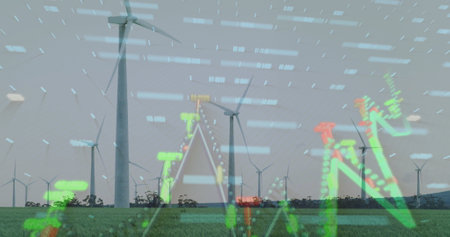Introduction to Energy Fields and the Human Aura
The study of energy fields and the human aura has long captivated the curiosity of seekers, healers, and scholars alike. At its core, this area of inquiry concerns the subtle yet pervasive energetic layers said to surround and interpenetrate the human body. Often described as luminous or vibrational in nature, these fields are thought to reflect not only our physical vitality but also our emotional, mental, and spiritual states. Across diverse cultures and traditions, references to such auras or energy bodies abound—yet it is within the British context that a unique tapestry of beliefs and practices has emerged. In Britain, the exploration of energy fields is frequently woven together with threads from both historical folklore and contemporary scientific investigation. This introductory segment lays the foundation for understanding how these concepts have taken root and evolved on British soil, setting the stage for deeper exploration into their cultural resonance, historical trajectory, and real-life case studies from across the United Kingdom.
2. Historical Perspectives in the UK
The British understanding of energy fields and the human aura has deep roots, stretching back centuries and weaving through folklore, literature, and early scientific inquiry. This rich tapestry of perspectives has shaped how modern Britain views these subtle energies. In ancient times, British folklore brimmed with tales of luminous figures, ghostly presences, and the so-called “second sight.” These narratives often spoke of an invisible force surrounding individuals, connecting them to both nature and the spiritual realm.
Folklore and Cultural Traditions
Within rural communities, beliefs about energy fields manifested in customs such as the use of charms or rituals intended to protect one’s personal aura from malevolent forces. The idea of the “evil eye” and its countermeasures are examples of a collective recognition that unseen energies could impact daily life. The druids and wise folk were thought to possess particular sensitivity to these energies, using their knowledge for healing or divination.
Literary Reflections
British literature also offers a window into historical attitudes toward energy fields. Romantic poets like William Wordsworth and Samuel Taylor Coleridge frequently described a vital essence pervading all living things—a notion echoing the concept of the human aura. Later Victorian writers, fascinated by spiritualism and mesmerism, explored similar ideas through fiction and popular essays, reflecting society’s growing curiosity about invisible forces.
Early Scientific Inquiry
The transition from mysticism to investigation began in earnest during the 19th century. Figures such as Sir William Crookes and Sir Oliver Lodge became interested in phenomena like mesmerism and “animal magnetism,” seeking to bridge the gap between science and spirit. Although mainstream science remained sceptical, these inquiries laid groundwork for later exploration into bioenergetics and electromagnetic fields.
Summary Table: Key Historical Attitudes in Britain
| Period | Cultural Reference | Attitude Toward Energy Fields |
|---|---|---|
| Pre-17th Century | Folklore & Rituals | Auras viewed as protective or dangerous forces; integrated into daily life |
| 18th–19th Century | Literature & Poetry | Acknowledgement of a vital essence; poetic exploration of unseen energies |
| Late 19th Century | Scientific Inquiry | Sceptical investigation; attempts to measure or explain energy phenomena |
Enduring Influence
The enduring influence of these historical perspectives continues to inform contemporary British attitudes towards energy fields and human aura. Whether approached through tradition, artful expression, or scientific curiosity, the quest to understand these subtle realms remains a notable thread within the cultural fabric of the United Kingdom.

3. Contemporary Scientific and Holistic Approaches
Within the United Kingdom, interest in energy fields and the human aura has grown to encompass both scientific enquiry and holistic traditions. Recent years have witnessed a convergence of thought, where academic researchers and practitioners in complementary medicine increasingly engage with the concept of subtle energies. British universities, including those at Edinburgh and London, have initiated studies into biofields—subtle electromagnetic phenomena associated with living organisms. While mainstream medical science remains cautious, some researchers are exploring whether these fields can be measured or correlated with well-being. In parallel, holistic health practices such as Reiki, Therapeutic Touch, and crystal healing have become more prominent within British society. These approaches often view the aura as an integral aspect of personal health, seeking to balance energies through hands-on techniques or meditative practices. The National Health Service (NHS) recognises certain complementary therapies under regulated frameworks, reflecting a pragmatic openness to non-conventional modalities where patient benefit is demonstrated. Moreover, public interest groups and professional bodies, such as the British Complementary Medicine Association, promote ongoing dialogue between practitioners, scientists, and the wider community. This blend of rigorous investigation and time-honoured tradition shapes a distinctly British perspective on energy fields—a perspective that values empirical evidence while respecting the lived experiences of those who work with the human aura.
4. Prominent British Practitioners and Theories
Britain has long been a fertile ground for the exploration and interpretation of human energy fields and the aura. Over the years, several eminent practitioners, thinkers, and schools of thought have emerged, each shaping how these subtle phenomena are understood in the British context.
Key Figures in British Aura Studies
Among the most influential early figures was Sir Arthur Conan Doyle, best known for his Sherlock Holmes stories, but also a passionate proponent of spiritualism and energetic phenomena. Similarly, Dora van Gelder Kunz, though originally Dutch-American, worked extensively with British collaborators to advance clairvoyant research on the human aura. In more recent decades, Dr. David Tansley played a significant role in integrating esoteric healing systems with mainstream holistic therapies in the UK.
| Name | Main Contributions | Period Active |
|---|---|---|
| Sir Arthur Conan Doyle | Popularised spiritualist ideas; wrote on psychic phenomena including aura perception | Early 20th Century |
| Dora van Gelder Kunz (UK collaborations) | Pioneered clairvoyant observations of auras; collaborated with British healers | Mid-20th Century |
| Dr. David Tansley | Brought subtle energy concepts into British holistic medicine; authored key texts on chakras and energy fields | Latter 20th Century |
| Barbara Brennan (British influence) | Brennan’s work influenced many British energy healers though she is American; her school has UK branches | Late 20th Century–Present |
Schools of Thought: Blending Science and Esotericism
British perspectives on the aura often reflect a balance between empirical curiosity and esoteric tradition. The Theosophical Society, with its strong presence in London since the late 19th century, provided an intellectual home for early research into subtle bodies and auras. Later, organisations such as the College of Psychic Studies in South Kensington became renowned for their workshops and research into auric perception using both intuitive and technological approaches.
Theosophy’s Enduring Legacy
The Theosophical Society’s teachings—particularly those of Annie Besant and C.W. Leadbeater—established some of the earliest systematic descriptions of the human aura available in English. Their works inspired generations of British clairvoyants and healers to observe, sketch, and interpret energy fields as part of personal growth and therapeutic practice.
Modern Approaches: Integrating Technology
In contemporary Britain, there is growing interest in merging traditional clairvoyant methods with scientific instrumentation. Some practitioners utilise biofeedback devices or Kirlian photography to visualise what was once only seen by sensitives. This openness to innovation reflects Britain’s pragmatic approach to spiritual inquiry—honouring tradition while embracing new possibilities.
5. Case Studies from Across the United Kingdom
Introduction to British Case Studies
To truly grasp how the concepts of energy fields and human aura are perceived and applied in contemporary Britain, it is invaluable to examine a selection of case studies from various regions. These real-life experiences provide insight into both individual journeys and collective practices, reflecting the unique cultural texture of the UK.
The Healing Circles of Glastonbury
In the mystical town of Glastonbury, Somerset, a longstanding tradition of healing circles persists. Local practitioners gather weekly at community centres, engaging in group meditations that focus on energy field alignment. Participants have reported sensations of warmth, tingling, and emotional release—phenomena interpreted as shifts in personal auras. These gatherings blend ancient Celtic beliefs with modern holistic approaches, underscoring how British communities adapt traditional wisdom to present-day contexts.
Aura Photography in London’s Wellness Scene
Within London’s vibrant wellness industry, aura photography has emerged as both a curiosity and a therapeutic tool. At several holistic fairs and dedicated studios, individuals sit for photographs purported to capture their auric fields. Practitioners interpret these colourful images using language rooted in both Eastern philosophies and local traditions. Clients often recount newfound self-awareness or changes in lifestyle following their sessions, suggesting practical applications for understanding one’s energetic presence.
University Research in Edinburgh
Academic inquiry into energy fields is not absent from the UK landscape. Researchers at the University of Edinburgh have conducted controlled experiments exploring the psychological effects of aura reading and energy healing. While scientific consensus remains cautious, some participants have described subjective improvements in wellbeing and stress reduction after receiving energy-based interventions, highlighting an intersection between empirical study and personal testimony.
Community Outreach in Manchester
In Manchester, grassroots organisations incorporate energy field awareness into outreach programmes aimed at mental health support. Through workshops and guided exercises, facilitators teach clients basic techniques for grounding and aura strengthening. Feedback collected over several years reveals enhanced self-esteem and resilience among attendees, demonstrating how these concepts serve as practical tools within urban British communities.
Synthesis and Reflections
Together, these cases illustrate the diverse ways Britons engage with energy field concepts—whether seeking healing, pursuing self-knowledge, or fostering community connection. The adaptability of these ideas within British culture speaks to an enduring curiosity about unseen forces that shape human experience. Such stories remind us that even amidst scepticism, the search for meaning through subtle energies continues to inspire individuals across the United Kingdom.
6. Societal Attitudes and Cultural Integration
Within the fabric of British society, the concepts of energy fields and the human aura occupy a distinctive space—a blend of curiosity, scepticism, and quiet acceptance. The British public, shaped by centuries of philosophical discourse and empirical tradition, approaches these ideas with a measured reserve, yet not without genuine intrigue. It is in the daily rituals—be it a morning meditation, an evening walk amidst ancient woodlands, or seeking solace in a tranquil garden—that many subtly acknowledge the presence of energies beyond the material realm.
Spirituality in Britain often weaves together historical threads from Celtic mysticism, Christian contemplation, and more recent New Age philosophies. For some, the notion of an aura is reminiscent of the ‘spirit’ described in old English poetry or the subtle body referenced in local folklore. These beliefs are no longer limited to secluded circles; instead, they find resonance in wellness retreats across Cornwall, mindfulness workshops in London, and even informal discussions over tea in rural villages. The language may differ—‘vibes’, ‘atmosphere’, or simply ‘energy’—but the sentiment remains recognisable.
Health practices also reflect this cultural tapestry. While mainstream medicine continues to dominate public health policy, complementary therapies that engage with energy fields—such as Reiki, crystal healing, or reflexology—have found their advocates among Britons seeking holistic well-being. Such practices are often integrated discreetly into personal routines rather than overtly replacing conventional treatments, reflecting a pragmatic approach characteristic of British sensibilities.
The media and popular culture play their part as well. Television programmes exploring haunted locations or psychical phenomena invite viewers to consider unseen influences at play. Books on mindfulness and self-healing grace bestseller lists, hinting at a collective openness to subtle energies despite outward reticence. Yet, healthy scepticism prevails; debates about scientific evidence are frequent and robust, ensuring that belief is balanced with inquiry.
This nuanced integration means that energy field concepts are neither relegated to fringe status nor wholly mainstream. Instead, they form a quiet undercurrent—a gentle influence shaping attitudes towards health, spirituality, and community connection. Through case studies and personal testimonies, it becomes clear that for many Britons, acknowledging one’s energy field is less about dogmatic belief and more about fostering a mindful relationship with oneself and the surrounding world.
7. Future Directions and Conclusions
As the exploration of energy fields and the human aura continues to evolve within the United Kingdom, it is clear that both scientific inquiry and holistic practice are entering a new era. British researchers and practitioners alike are poised at a unique crossroads, where traditional wisdom meets modern scientific curiosity. Looking ahead, several considerations will shape the future of energy field research and its practical application in the UK.
Firstly, there is a growing recognition among scholars and healers of the need for rigorous, evidence-based studies that bridge the gap between subjective experience and objective measurement. Universities and independent research bodies across Britain have begun to invest in interdisciplinary projects that bring together physicists, psychologists, medical professionals, and spiritual practitioners. Such collaborations are expected to yield valuable insights into how subtle energies may influence well-being, as well as how these phenomena can be documented using advanced technology.
On the practical side, many British therapists and holistic health centres are integrating energy field awareness into their offerings. Courses on aura reading, Reiki, and biofield therapies are becoming more commonplace, reflecting a broader societal openness to complementary approaches. However, this growth brings with it an imperative for regulation and quality assurance. The establishment of national standards and accreditation schemes would serve to protect both practitioners and clients, ensuring that those who seek support receive genuine benefit from trained professionals.
Furthermore, public education remains a cornerstone for dispelling misconceptions surrounding energy fields and human aura work. Initiatives aimed at increasing awareness—through workshops, community outreach, and accessible literature—can foster a more informed and accepting environment. This cultural shift may enable individuals to explore personal energetic health without stigma or scepticism.
Looking to the future, ethical considerations will also come to the fore. As research deepens our understanding of energy fields, questions regarding privacy, consent, and responsible use of emerging technologies must be addressed thoughtfully. The uniquely British tradition of balancing innovation with respect for individual rights provides an excellent foundation for such discussions.
In conclusion, the journey toward understanding energy fields and the human aura in Britain is both rooted in heritage and open to innovation. As we blend scientific investigation with time-honoured practices, there lies immense potential for enhancing personal well-being and collective knowledge. By fostering collaboration, maintaining high standards, educating the public, and upholding ethical principles, the UK can continue to lead in this fascinating field—honouring the past while embracing a bright future for energy field research and practice.

